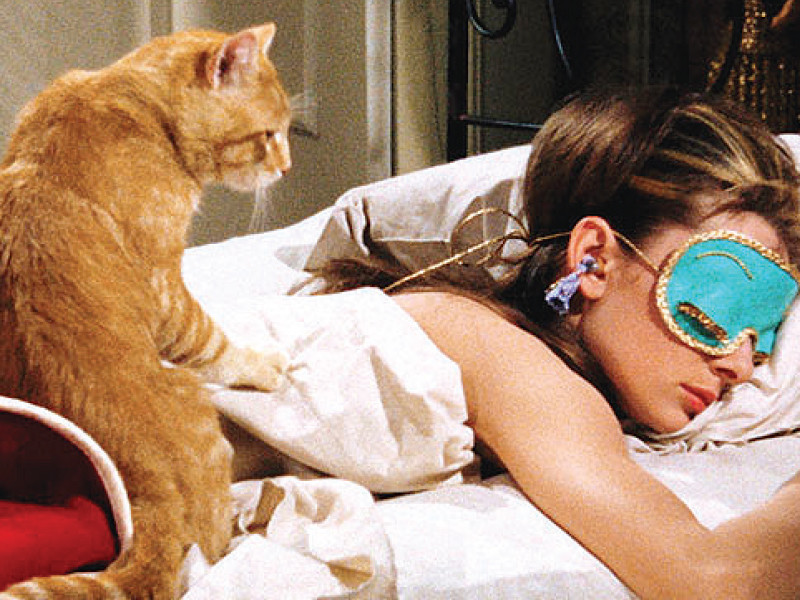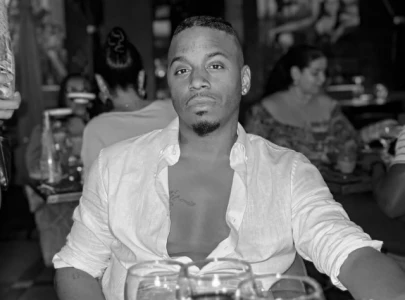
Cinema has a way of turning the most ordinary into the extraordinary, and few creatures embody this alchemy more than cats. These enigmatic beings have padded their way into some of the most iconic films, offering not just aesthetic appeal but also serving as emotional linchpins that anchor characters, themes, and entire plots.
Whether it's a nameless tabby representing the yearning for connection or a finicky feline foreshadowing a detective's descent into chaos, these cats offer more than just a cute moment on screen. They bring a touch of unpredictability, a reminder that not everything can be tamed or understood. So let's take a contemplative look at how four cine greats have used their feline stars to elevate storytelling to new heights.
1. Breakfast at Tiffany's
When you think of Breakfast at Tiffany's, the first image that might come to mind is Audrey Hepburn's Holly Golightly, elegantly poised outside Tiffany's with a croissant in hand. But the film's heart lies in a much smaller, more elusive character: Cat. This nameless orange tabby isn't just a pethe's a living metaphor for Holly's own sense of rootlessness.
Throughout the film, Holly refers to herself as a "wild thing" that can't be owned, much like Cat. Their relationship is one of convenience, marked by fleeting moments of affection but no real commitment. It's only in the film's final moments, as Holly searches for Cat in the rain-soaked streets of New York, that she realises her unexpected intimacy with him, despite all resistance.
This turning point, where she finally accepts her own vulnerability, wouldn't carry the same weight without Cat as the catalyst. In the film's sweet ending, Holly must find and comfort Cat before she can turn to Paulas if her longest feline companion must be the first one to be welcomed in her new life.
2. The Godfather
In The Godfather, director Francis Ford Coppola uses a cat to reveal the duality of Don Vito Corleone's character. The opening scene, where Marlon Brando's Don Vito gently strokes a cat while discussing "business," is one of the most iconic in film history. But this feline wasn't a planned part of the sceneCoppola found the stray on the studio lot and handed it to Brando right before shooting.
The result is a masterstroke in character development. The cat's presence adds a layer of complexity to Don Vito, humanising a man who otherwise commands fear and respect. Here is a man who orders hits on his enemies with the same calmness as he pets this unassuming creature. The juxtaposition of a soft, purring cat with the cold, calculated world of mafia dealings offers a subtle commentary on the nature of power and the masks people wear. Suffice it to say, without this scene, the Don's multifaceted personality might not be as compelling or as chilling.
3. Inside Llewyn Davis
The Coen Brothers' Inside Llewyn Davis is a melancholic meditation on failure, loneliness, and the pursuit of artistic dreams. The film follows the eponymous folk singer, played by Oscar Isaac, as he drifts through a bleak, wintry New York City, tryingand failingto make his mark on the music scene. Along the way, Llewyn accidentally becomes the caretaker of a friend's cat, who serves as both a literal and metaphorical companion on his journey.
This ginger tabby, later revealed to be two different cats, represents Llewyn's own sense of dislocation and lack of control over his life. The cat's escape and eventual return mirror Llewyn's own cyclical journey of repeated mistakes and missed opportunities. In one poignant scene, he gazes at a cat running through the snow, wondering aloud if it's the same one he lost.
The ambiguity of the cat's identity reflects Llewyn's own uncertainty about his place in the world, making the film's exploration of existential despair far more nuanced than it would have been otherwise.
4. The Long Goodbye
Robert Altman's subversive take on the noir genre, The Long Goodbye opens with one of the most memorable cat scenes in cinematic history. Philip Marlowe, played by Elliott Gould, is a world-weary private detective living in a shabby Los Angeles apartment. His morning routine revolves around his finicky cat, who refuses to eat anything but a specific brand of cat food. When Marlowe fails to produce the desired can, the cat vanishes, leaving Marlowe alone to solve the mystery of his missing friend.
This seemingly trivial subplot becomes a clever narrative device that sets the tone for the entire film. The cat, with its stubborn independence and refusal to conform, mimics Marlowe's own disillusionment with the world around him. Just as Marlowe can't control the cat, he can't control the events that unfold, leading him deeper into a web of deceit and betrayal.
Ultimately, the cat's departure signals Marlowe's entry into a case where nothing is as it seems, and everyoneincluding the catoperates on their own terms. Without this feline foil, The Long Goodbye might lose the core of its ironic detachment and biting commentary on the genre it so skillfully deconstructs.


1731916090-0/sabrina-(3)1731916090-0-165x106.webp)


1732020599-0/BeFunky-collage-(73)1732020599-0-165x106.webp)
1732012836-0/Express-Tribune-(9)1732012836-0-270x192.webp)
1732005713-0/Express-Tribune-(6)1732005713-0-270x192.webp)


1732004244-0/Untitled-design-(13)1732004244-0-270x192.webp)
1732002444-0/Express-Tribune-(4)1732002444-0-270x192.webp)






COMMENTS
Comments are moderated and generally will be posted if they are on-topic and not abusive.
For more information, please see our Comments FAQ